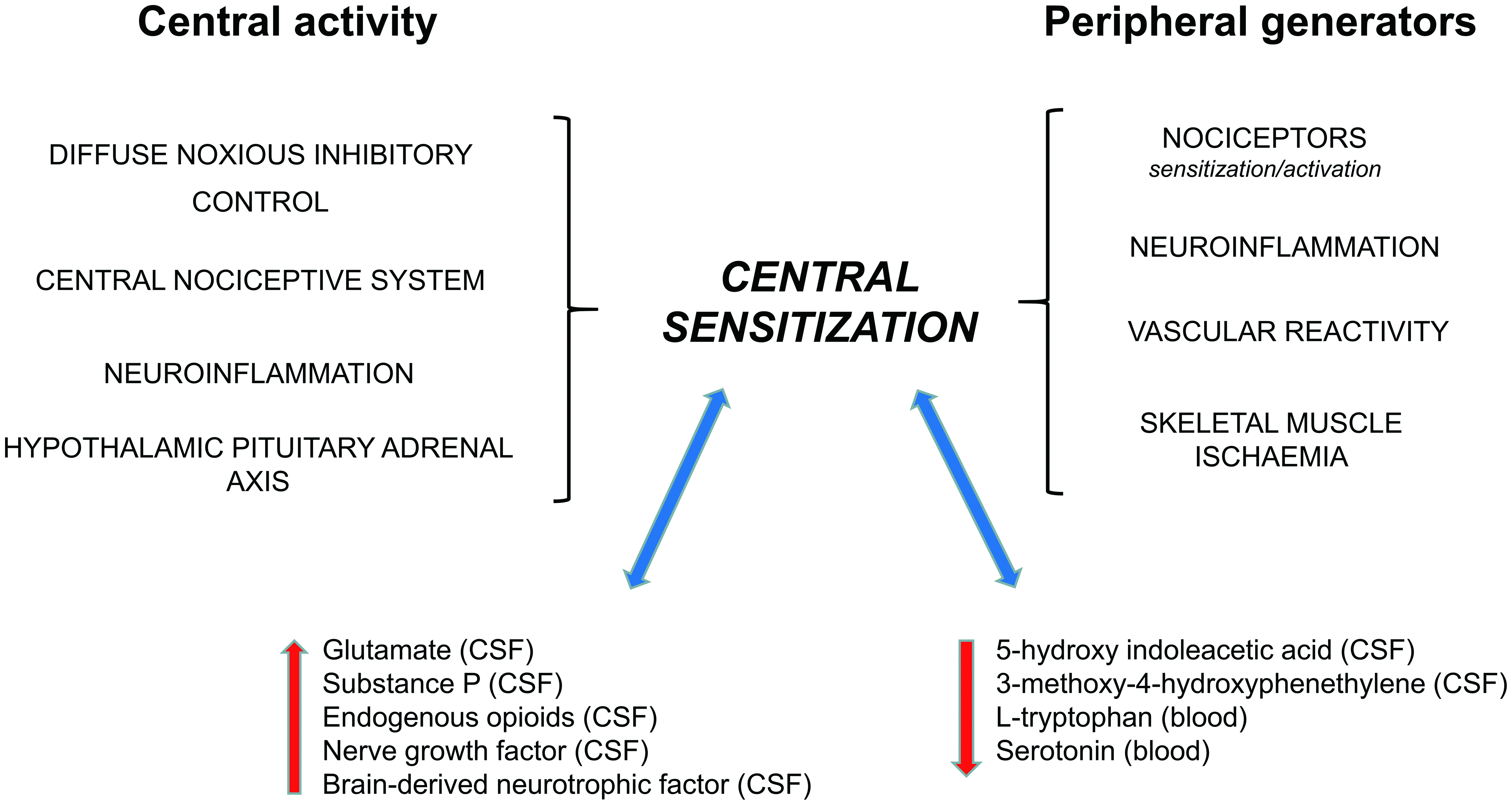Flupirtine as a Potential Treatment for Fibromyalgia
引用次数: 0
Abstract
exhibits indirect N-methyl-D-aspartate (NMDA) receptor antagonism via activation of potassium channels, leading to the suppression of neuronal overex-citability. 3,4 Thus, flupirtine has been used as an analgesic for the last 35 years in the management of pain and also exerts skeletal muscle relaxation and neuroprotection properties. 3–5 Flupirtine is available as the maleate salt, a hydrophilic compound that is rap-idly absorbed from the gastrointestinal tract with a bioavailability of 90%. 6,7 The volume of distribution (Vd) of 100 mg of flupirtine is 154 L in healthy volunteers and is up to 84% bound to human albumin. 6,7 The half-life of flupirtine depends on the route of administration, but is typically between 6.5–10.7 h. Following oral administration of 100 mg of flupirtine, clearance is 275 ml/min in healthy volunteers. 6,7 Flupirtine is metabolized in the liver by per-Flupirtine Abstract Fibromyalgia is a complex disorder characterised by chronic pain, fatigue, sleep disturbance and cognitive dys-function with limited benefit gained with current therapies. The mean global prevalence of 2.7% is estimated for this chronic condition. Pharmacological and non-pharmacological therapeutic approaches are often required as treatments of the challenges associated with fibromyalgia. Flupirtine, a non-opioid drug, exhibits effective analgesia in a range of acute and persistent pain conditions, and evidence as treatment of fibromyalgia is considered. Activation of Kv7 potassium channels and agonism at gamma-aminobutyric acid receptor A leading to indirect N-methyl-D-aspartate receptor antagonism is responsible for the analgesic effects of flupirtine and appears to be involved in other symptoms associated with fibromyalgia. Patients with fibromyalgia reported improved control of their symptoms without significant adverse effects in an observational audit in clinical practice. This article presents evidence that flupirtine, or related drugs, is a therapeutic option for the treatment of fibromyalgia. The pharmacology of flupirtine and mechanisms of action involved provide a spectrum of effects that would not only control the chronic pain characteristic of fibromyalgia but many of the other symptoms. Thus, further investigation of the efficacy of flupirtine or related drugs exhibiting a similar pharmacology as a treatment of fibromyalgia would be of interest. oxidase enzymes to the active N-acetylated analogue D13223 and 4-fluorohippuric, which are further oxidised and then conjugated inactive metabolites.

氟吡汀作为纤维肌痛的潜在治疗方法
通过激活钾通道表现出间接的N-甲基-D-天冬氨酸(NMDA)受体拮抗作用,导致神经元过度兴奋的抑制。3,4因此,氟吡丁在过去35年中一直被用作镇痛药,用于治疗疼痛,还具有骨骼肌松弛和神经保护特性。3–5氟吡丁可作为马来酸盐使用,这是一种亲水性化合物,可从胃肠道快速吸收,生物利用度为90%。6,7在健康志愿者中,100mg氟吡丁的分布体积(Vd)为154L,并且高达84%与人白蛋白结合。6,7氟吡丁的半衰期取决于给药途径,但通常在6.5-10.7h之间。口服100 mg氟吡丁后,健康志愿者的清除率为275 ml/min。6,7氟吡丁在肝脏中通过氟吡丁代谢摘要纤维肌痛是一种复杂的疾病,其特征是慢性疼痛、疲劳、睡眠障碍和认知功能障碍,目前的治疗效果有限。据估计,这种慢性病的全球平均患病率为2.7%。药物和非药物治疗方法通常是治疗纤维肌痛相关挑战所必需的。氟吡丁是一种非阿片类药物,在一系列急性和持续疼痛情况下表现出有效的镇痛作用,并被认为是治疗纤维肌痛的证据。Kv7钾通道的激活和γ-氨基丁酸受体A的激动作用导致N-甲基-D-天冬氨酸受体的间接拮抗作用是氟吡丁的镇痛作用的原因,并且似乎与纤维肌痛相关的其他症状有关。纤维肌痛患者在临床实践中的一项观察性审计中报告称,他们的症状得到了改善,没有显著的不良反应。这篇文章提出的证据表明,氟吡丁或相关药物是治疗纤维肌痛的一种治疗选择。氟吡丁的药理学和相关作用机制提供了一系列作用,不仅可以控制纤维肌痛的慢性疼痛特征,还可以控制许多其他症状。因此,对氟吡丁或表现出与治疗纤维肌痛相似药理学的相关药物的疗效进行进一步研究将是令人感兴趣的。氧化酶转化为活性N-乙酰化类似物D13223和4-氟hippuric,它们被进一步氧化,然后结合无活性代谢产物。
本文章由计算机程序翻译,如有差异,请以英文原文为准。
求助全文
约1分钟内获得全文
求助全文

 求助内容:
求助内容: 应助结果提醒方式:
应助结果提醒方式:


